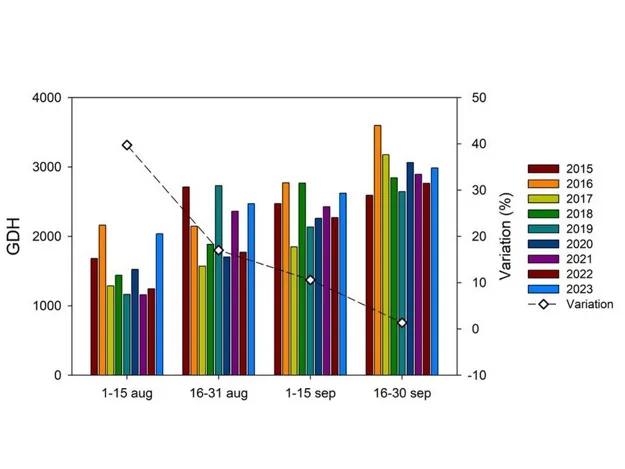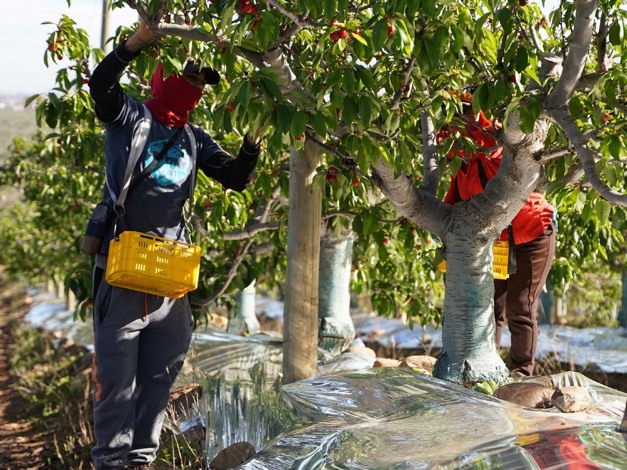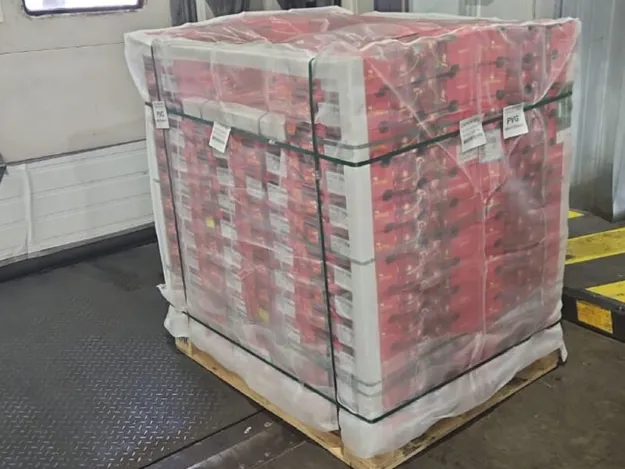As the first shipment of cherries from Chile for the 2023/2023 season have been air freighted to Shanghai, China over the past weekend and opened in the market yesterday, technical experts in Chile are closely watching the later blooming of cherries. This follows a hotter August and cooling after rain over the past month. Although another record harvest and export volumes of up to 100 million cases of cherries are predicted, there is some uncertainty over the full effect due to these different climatic factors.
The first cherries from Chile was eagerly awaited yesterday in China.
According to Lorena Pinto, Product Manager and an evaluator at ANA Chile: “It is a difficult season in terms of climatic conditions, we are faced with the slow and uneven progress of cherry and apple blossoms.”
Álvaro Sepúlveda León, Research Assistant at the University of Talca in Chile, describes the challenges the cherry as well as apple trees face. “In 2022, after the cold winter fruit trees required little post-dormancy heat unit accumulation for reaching full bloom. On the opposite, after limited chill winter accumulation in 2023, phenological progress required more heat unit accumulation for bloom. Heat unit accumulation is usually calculated as Growing Degree Hours (GDH), or Growing Degree Days (GDD). August 2023 began with a large heat unit accumulation but normalized in September. Then phenological progress slow down. The transition through dormancy would be more decisive than the heat unit accumulation for the advancement of bud phenology. Record winter chill requirement of each cultivar only ensures that blooming will occur. On the other hand, with a large amount of winter chill accumulation during dormancy buds need less heat units, so blooming is earlier and shorter.” The graph shows the accumulation of GDH by period in Sagrada Familia and the percentage variation of 2023 with respect to the average of each period of the last seasons.
The graph shows the accumulation of GDH by period in Sagrada Familia and the percentage variation of 2023 with respect to the average of each period of the last seasons.
However, Pinto says despite these climatic challenging there is a promising future for the Chilean cherry industry based on the new varieties they are trialling. “The Nipama cherry currently under trial on Ma×Ma 14, located in Ovalle, IV Region, Chile is going faster than all I have seen up to now in terms of maturity with big crop and size. The Nimba cv trial on maxma also located in the same area is going faster than Brooks in maturity with better size. Brooks us used as a control variety that is included in one of our early Cherry trials with growers, located in Ovalle.”
It is still early to say how much the weather will impact productivity of the cherry trees and ultimately if the predicted record volumes will be reached. Another factor to consider is the long term effect of the flooding from winter heavy rains this year will have on the cherry trees.

Garces Fruit employees harvesting the first cherries of the 2023/24 season.
Meanwhile Garces Fruit from Chile has harvested and airfreighted the first shipment of cherries to China over the weekend of 14 and 15 October, 2023.

Garces Fruit
In a statement the company said: “The first cherries of the 2023/2024 season are already in the air, heading to China on a plane that departed in the early hours of Sunday morning, and is expected to arrive tomorrow Monday in Shanghai. The cherries, which were harvested last Friday (13 October) in Ovalle, were processed on Saturday at our plant in San Francisco de Mostazal, where they were properly packed and ready to travel and arrive at their destination with the best quality. Soon we will tell you how the trip was and how these first cherries were received in the Asian giant, which we hope will be a good omen for our consumers, producers, workers and all those involved in this wonderful process. As a Garces Fruit team, we are ready and anxious for the beginning of this period for which we prepare so much during the year.”
For more information:
Lorena Pinto
ANA Chile
Tel: +569 98182940
Email: [email protected]
www.anachile.cl










